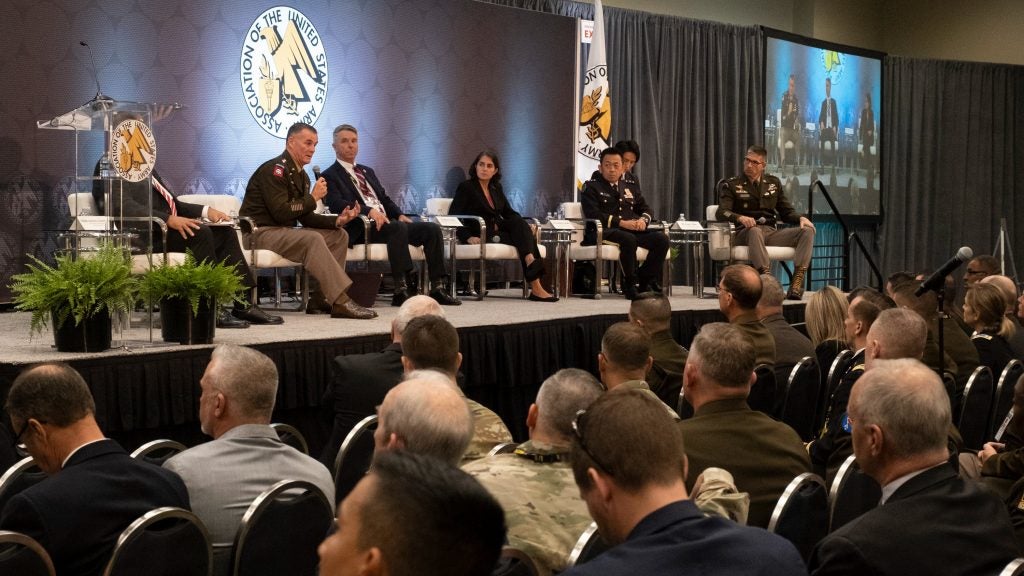AUSA 2022: Philippines to Enhance Military Cooperation with US, Japan in 2023 via Exercises
News on the Armed Forces of the Philippines’ intent to participate in exercises in Japan as well as the deployment of the U.S. Army’s new Multi-Domain Task Force to joint exercises in the future was broken during several forums at the Association of the United States Army’s annual meeting and exposition last week. This comes in the middle of a busy October between the two countries, with several exercises and the arrival of the USS Ronald Reagan Carrier Strike Group in the Philippines.
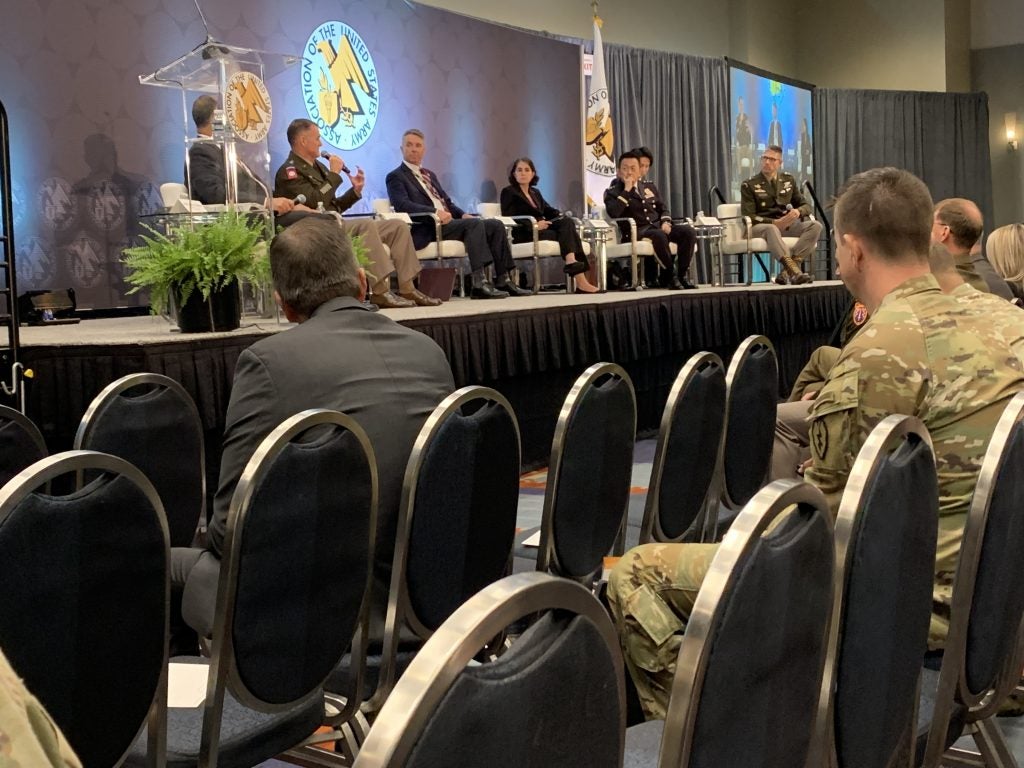
(Aaron Lariosa)
During the Contemporary Military Forum 3: Landpower and Integrated Deterrence in the Indo-Pacific talk on the second day of the meeting, General Charles Flynn of the U.S. Army Pacific mentioned the Philippines’ intent to participate in exercises in Japan.
“He [Japan Ground Self Defense Force Chief Yoshihide Yoshida] had an engagement with the Philippine Chief General Brawner, and now the Philippine Army wants to participate in Orient Shield and Yama Sakura.”
Exercise Orient Shield and Yama Sakura are both bilateral exercises between the U.S. and Japan held on Japanese territory. The Philippines’ declaring its intent to participate in these exercises is a major departure from the traditional exercises held between the three countries. Usually, Japanese and American troops would travel to the Philippines in activities such as the recently concluded KAMANDAG exercise.
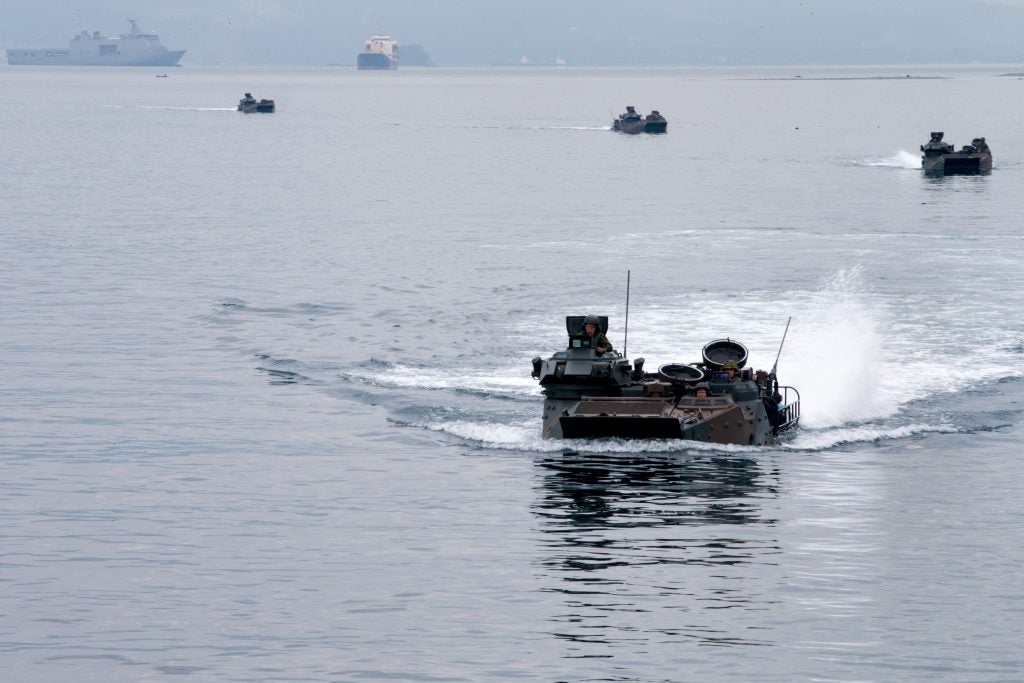
(U.S. Marine corps photo by LCpl. Christine Phelps)
Cooperation by the Philippines with the U.S. and Japan has been deepening over the past few years. Although it should be noted that most efforts between the three have been bilateral towards the Philippines, with trilateral efforts taking shape in a few exercises.
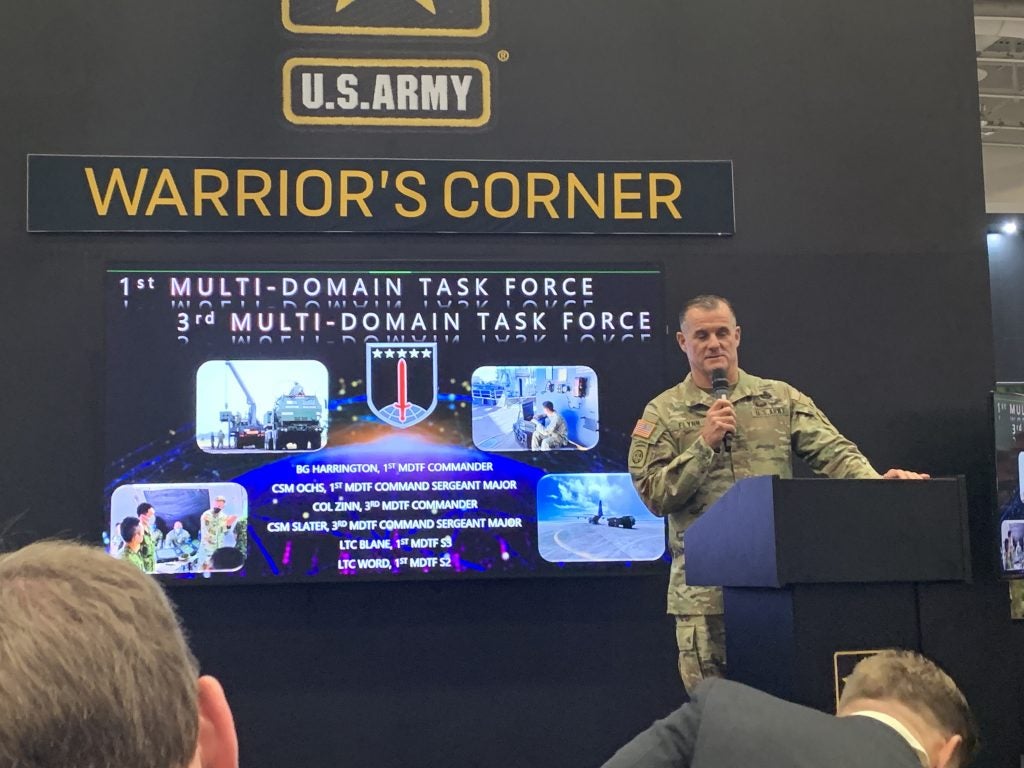
The final briefing of AUSA 2022 was focused on the Army’s Multi-Domain Task Force and its important role in the Indo-Pacific. The MDTF is the U.S. Army’s response to the challenges brought on by adversaries in the region, mainly the People’s Republic of China. During the talk, General Flynn alongside commanders of the 1st and newly activated 3rd MDTFs presented their progress and role in the region. The speakers spoke on achievements, exercises with partners, and future plans for the units.
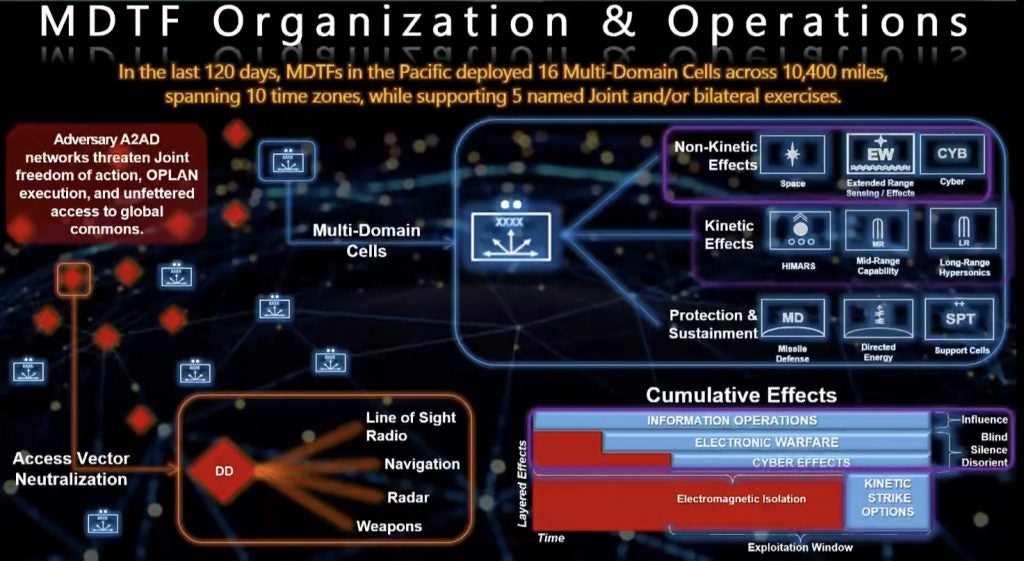
(AUSA 2022 Warriors Corner – Multi-Domain Task Force’s Critical Role in the Indo-Pacific.)
Elements of MDTFs, called “Cells,” have already been deployed across the Indo-Pacific. One likely example was during Balikatan 2022 when Army Patriot surface-to-air missiles were deployed for the first time during the joint Philippine-American exercise. Cells may have also been likely deployed during the preceding Salaknib Exercise.
“In the last 120 days, MDTFs in the Pacific have deployed 16 Multi-Domain Cells across 10,400 miles, spanning 10 time zones, while supporting 5 Joint and/or bilateral exercises.”
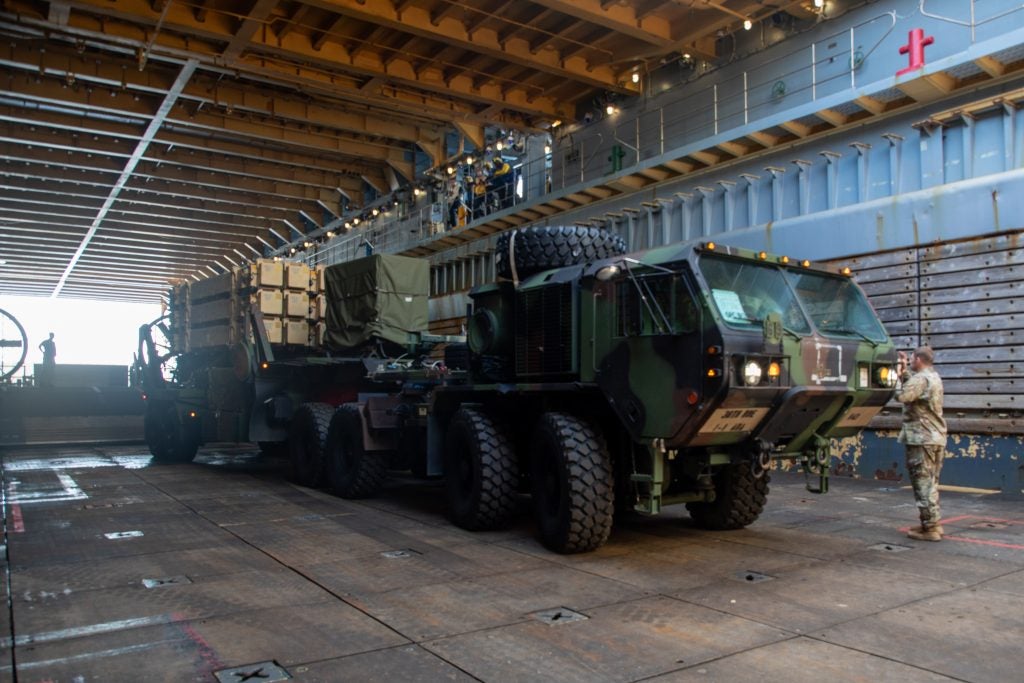
After the briefing, Overt Defense asked General Bernard J. Harrington how the U.S. Army’s Multi-Domain Task Force was integrating with the AFP:
“It has been an outstanding experience with our partners, particularly as we look at synchronizing our non-kinetic and long-range kinetic effects and then partnering with the Philippine capabilities.”
The General highlighted how the MDTF is gaining interoperability “very well” with Philippine forces, explaining:
“It really is looking at those areas of interoperability, us being able to sit down next to our Filipino partners side by side and be able to look at what are creative ways to achieve that Joint Force Commander’s intent. Then it’s that interoperability of the information that we have with the information that the Philippines has. How are we able to share that in order to accomplish the mission? And then it’s that procedure every time we operate, it’s our ability to capture that in a standard operating procedure, and then be able to use that and next time we operate in order to start from it. And we’ve been able to do that very well with our Philippine partners.”
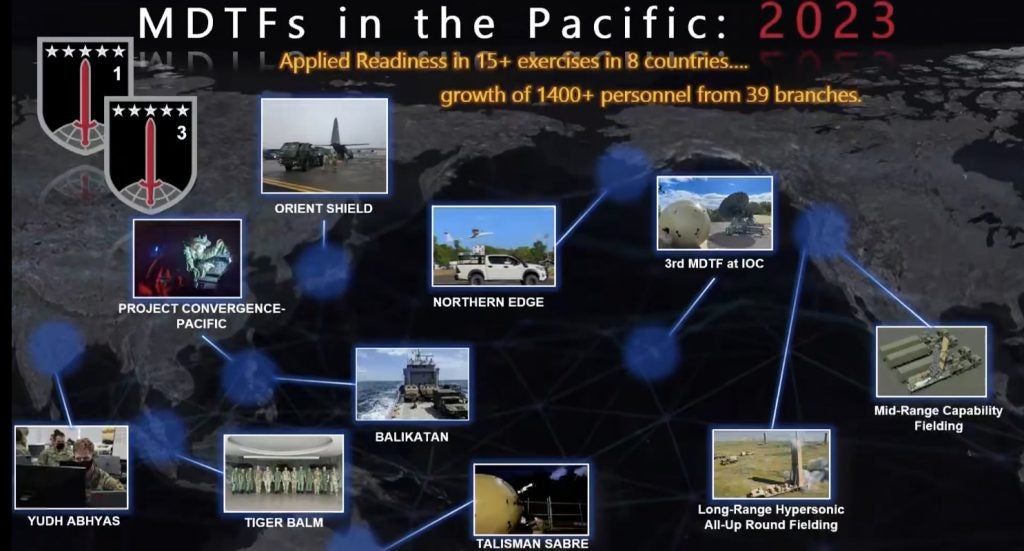
(AUSA 2022 Warriors Corner – Multi-Domain Task Force’s Critical Role in the Indo-Pacific.)
When asked if an MDTF would be partaking in future exercises in the Philippines, such as Balikatan and Salaknib, Harrington remarked:
“So as you saw in that last slide [reference above] we do expect to participate in exercises really with our Philippine partners”
The arrival of a full MDTF in the Philippines would follow the deployment of the U.S. Marine Corps’ inaugural deployment of their 3rd Marine Littoral Regiment to this year’s Balikatan. This unit is similar to the MDTF in mission and capabilities. The Philippines lacks any equivalent to the MDTF, but the Philippine Marine Corps’ Coastal Defense Regiment shares some similarities with the USMC’s MLR.
Throughout AUSA 2022, the topic of joint deterrence constantly referred to the strong network of allies and partners that the U.S. retains in the region. The Philippines is a core part of this network, the only state with a mutual defense treaty with the U.S. in Southeast Asia.
Recent engagements between the U.S. and the Philippines have yielded enhanced relations between the two under the new Marcos Administration. Such examples included an integrated readiness plan between the USMC and PMC, talks of joint patrols between the U.S. Navy and the Philippine Navy, and $100 million in foreign military financing aid to the AFP.
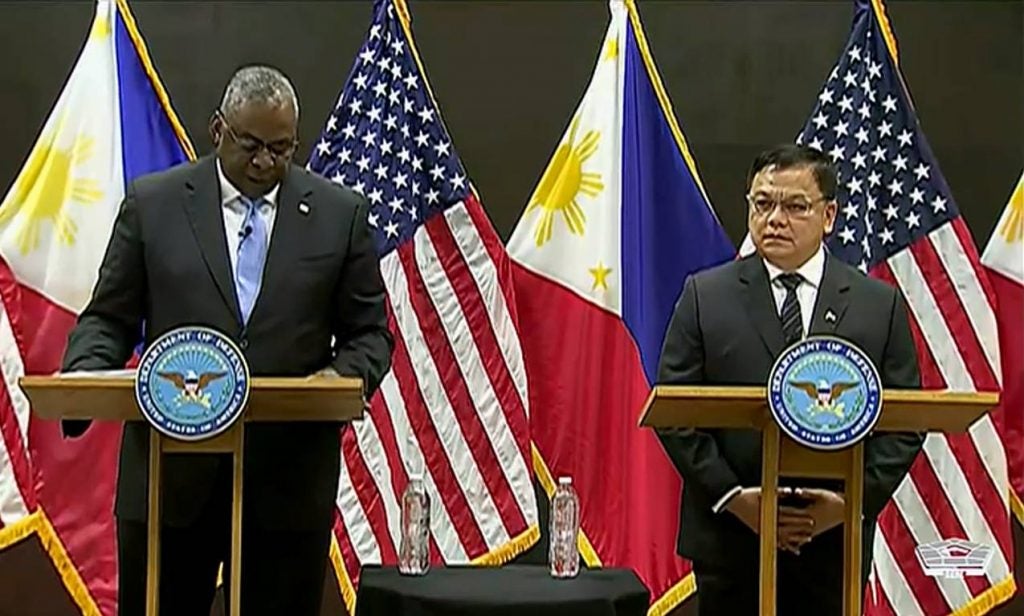
Recent conversation about the Philippines’ role in a Taiwan scenario has also been in focus, with talks between the Armed Forces of the Philippines staff and their U.S. counterparts in Hawaii touching on the topic. The Philippines’ geographic position puts itself in the middle of any conflict including Taiwan. For example, the many choke points transiting the first island chain into the second island chain to in and around the Philippines, such as the Luzon Strait. Exercises also paint a picture of U.S. forces operating in and around the Philippines for operations relating to a Taiwan conflict, with Balikatan 2022 seeing USMC troops operating in Northern Luzon.
Cover Photo Courtesty of the Association of the United States Army

